Advertisements
Advertisements
प्रश्न
Answer the following question:
Find the expression for the resistivity of a material.
उत्तर
Resistance R of a conductor depends on the length 'l' and area of cross-section 'A' of the conductor.
R α l
and R α `(1)/("A")`
∴ `"R" ∝ "l"/"A"`,
∴ R = `"Q" xx ("l")/("A")` ( Q is constant)
Q ( Resistivity) = `("RA")/("l")`
Where Q (rho) is called resistivity of the conductor it is also called as specific resistance.
If we put L = 1m and A = 1m2 then R = Q
Conclusion
Thus, the resistivity of a conductor is defined as the resistance of a conductor of unit length and unit area of cross-section. The SI units of resistivity are ohm-meter ( Ω - m).
Resistivity is the characteristics property of a material. It is a different material.
APPEARS IN
संबंधित प्रश्न
Draw a labelled diagram of Van de Graaff generator. State its working principle to show how by introducing a small charged sphere into a larger sphere, a large amount of charge can be transferred to the outer sphere. State the use of this machine and also point out its limitations.
In the circuit diagram given below, AB is a uniform wire of resistance 15 Ω and length 1 m. It is connected to a cell E1 of emf 2V and negligible internal resistance and a resistance R. The balance point with another cell E2 of emf 75 mV is found at 30 cm from end A. Calculate the value of R.
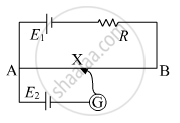
The figure shows a plot of three curves a, b, c, showing the variation of photocurrent vs collector plate potential for three different intensities I1, I2and I3 having frequencies v1, v2 and v3 respectively incident of a photosensitive surface.
Point out the two curves for which the incident radiations have same frequency but different intensities.
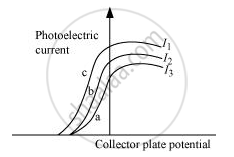
Find the potential difference `V_a - V_b` between the points a and b shown in each part of the figure.
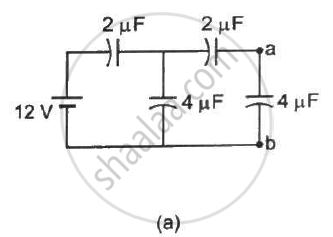
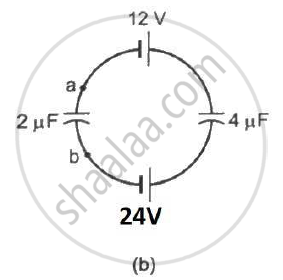
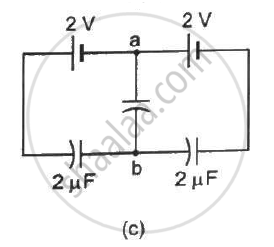
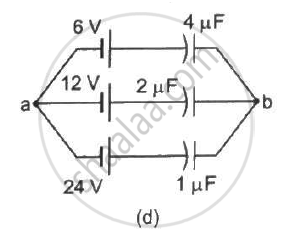
Find the potential difference between the points A and B and between the points B and C of the figure in steady state.

A charge of 1 µC is given to one plate of a parallel-plate capacitor of capacitance 0⋅1 µF and a charge of 2 µC is given to the other plate. Find the potential difference developed between the plates.
The capacitance between the adjacent plates shown in the figure is 50 nF. A charge of 1.0µC is placed on the middle plate. If 1.0 µC is placed on the upper plate instead of the middle, what will be the potential difference between (a) the upper and the middle plates and (b) the middle and the lower plates?
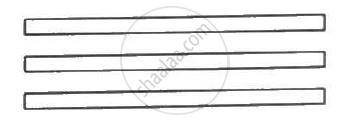
A capacitor having a capacitance of 100 µF is charged to a potential difference of 50 V. (a) What is the magnitude of the charge on each plate? (b) The charging battery is disconnected and a dielectric of dielectric constant 2⋅5 is inserted. Calculate the new potential difference between the plates. (c) What charge would have produced this potential difference in absence of the dielectric slab. (d) Find the charge induced at a surface of the dielectric slab.
What will be the potential difference in the circuit when direct current is passed through the circuit?
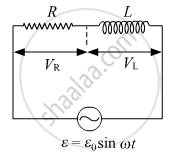
In circuits, a difference in potential from one point to another is often called ______.
If a positive charge moves in the direction of the electric field ______.
The unit of potential difference as used in electrical circuits is ________.
- It depends only on the initial and final position.
- It is the work done per unit positive charge in moving from one point to other.
- It is more for a positive charge of two units as compared to a positive charge of one unit.
A and B are two points in an electric field. If the work done in carrying 4.0C of electric charge from A to B is 16.0 J, the potential difference between A and B is:
An α-particle and a proton are accelerate at same potential difference from rest. What will be the ratio of their final velocity?
A bullet of mass of 2 g is having a charge of 2 µc. Through what potential difference must it be accelerated, starting from rest, to acquire a speed of 10 m/s.
Work done in moving a unit positive charge through a distance of x meter on an equipotential surface is:-
Can there be a potential difference between two adjacent conductors carrying the same charge?
